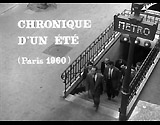
|
Chronicle of a Summer (1961, Fr.)
(aka Chronique d'un été (Paris 1960))
In co-directors Jean Rouch's and sociologist Edgar
Morin's ethnographic documentary - an intellectual experiment and
a prime example of cinema verite (a term coined by Morin),
during the time of France's Algerian War of Independence and at the
height of the French New Wave movement:
- the opening (possibly staged) sequence of Rouch,
Morin and female associate Marceline Loridan (who would be the
initial street interviewer) speaking about their project - book-ended
by the final sequence between the two directors
- the many on-street interviews conducted (by two female
associates, including Marceline Loridan) with contemporary Parisians
in the summer of 1960, to get an accurate 'snapshot' of life at the
time - by asking the simple question: "Are you happy?"
- the scene in the apartment of dark-haired, disillusioned
Italian immigrant exile Mary Lou Parolini (as Herself), a secretary
at Cahiers du Cinéma, speaking about her insecurities
of living an isolated and poor existence in the foreign city of Paris
- the hand-held tracking sequence of Marceline Loridan's
own voice-over monologue (recorded with a concealed microphone) as
she walked through a nearly deserted Place de la Concorde and then
in Les Halles market (in a stunning backlit image); she first spoke
of the on-going Israeli public trial of Nazi war criminal Adolf Eichmann,
and then gave her first-person recollection when she was deported
as a young girl with her family; they were herded and shipped off
to a Nazi death camp - she was the lone survivor when separated or
selected to live, with a Nazi number tattoo from Auschwitz on her
left forearm (first viewed earlier as she sat in an outdoor cafe)
-- she had returned to France after the war
|
Marceline Loridan's Monologue Sequence
|
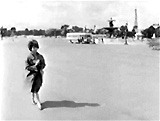
|
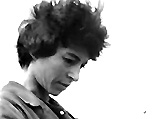
|
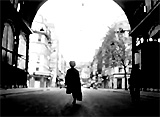
|
- the brief interlude in St. Tropez (the beach, a
bullfight, etc.) including an interview by black student Modeste
Landry of a sexy blonde starlet who was attracting photographic
attention
- the screening room deconstructing and self-analytical
sequence when some of the film's participants were convened to provide
feedback on rough-cut results of filming; there was disagreement
among the group - some thought the subjects were natural, sincere
and honest, while others criticized how people were unreal, phony
and posing or 'acting' - with 'camera-safe' statements and behaviors
- the ending sequence of the two directors, while walking
through Musee de L'Homme, accessing their own filmic experiment,
and whether it was a success or not; they realized how they were
not as objectively removed from the film, or in control as they originally
thought they would be; when they parted on the sidewalk and shook
hands to go in different directions, Morin spoke the film's final
ambiguous words: "We're in it now."
|
Two Directors: Morin and Rouch
|
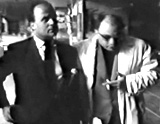
|
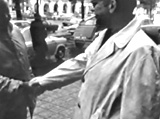
|
|
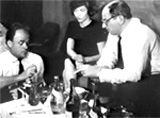
Opening Sequence
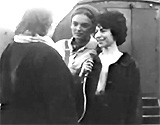
On-Street Interviews
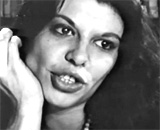
Mary Lou Parolini
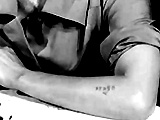
Marceline's Auschwitz Tattoo
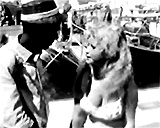
Interview of Blonde Starlet in St. Tropez
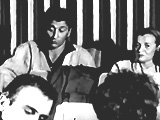
Screening Room Discussion
|







